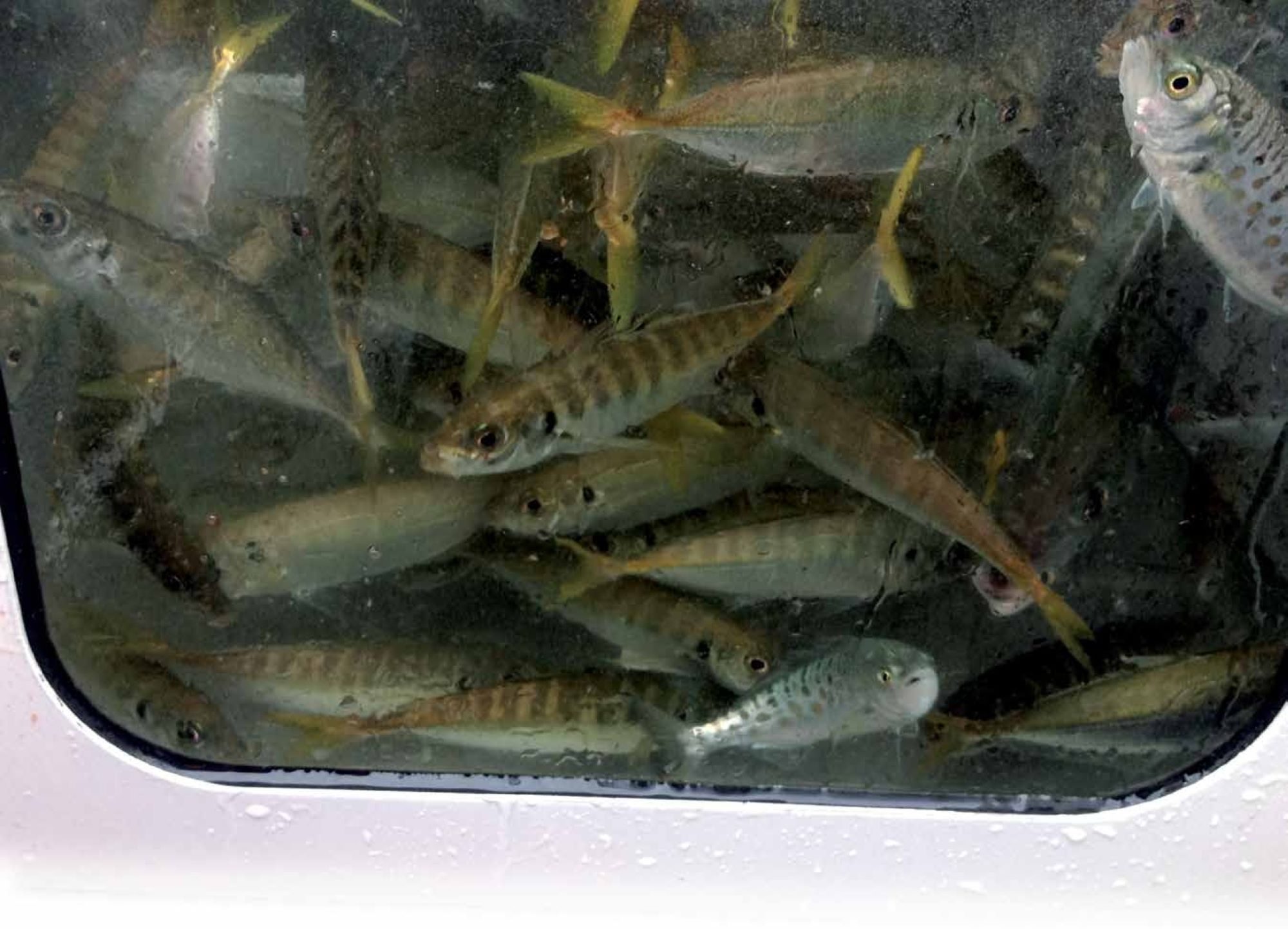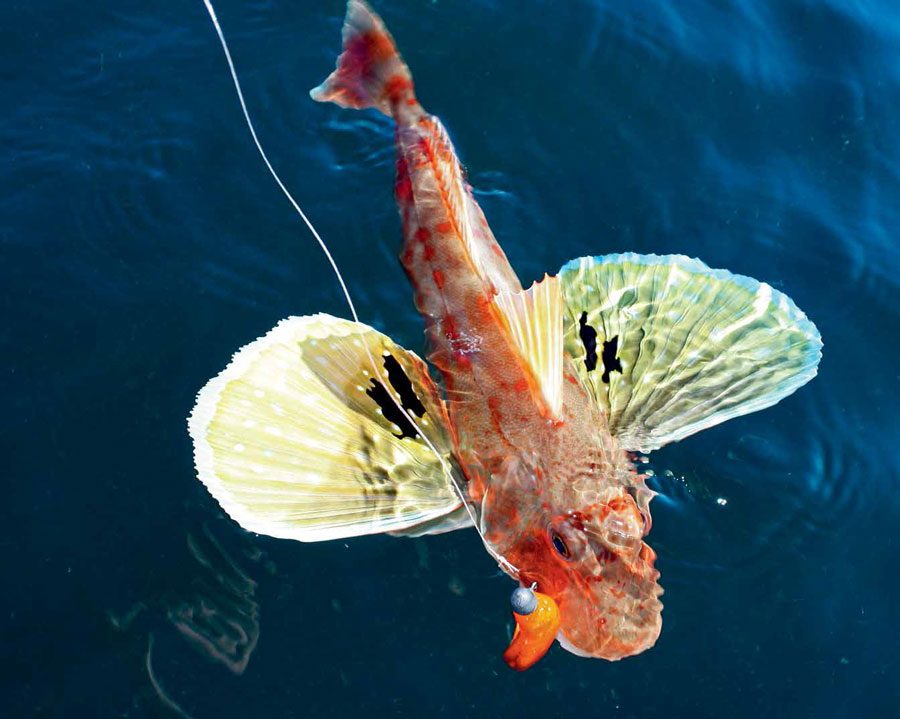

Good looking and great in the pan, gurnard is a popular recreational catch.
Red gurnard, popularly known as ‘carrots’ for their vibrant colours and long, tapering bodies, are a welcome sight on the end of the line.
Typically a reddish-pink to bright orange with purple-brown hues, they possess brightly-hued butterfly-type pectoral fins they stretch out when caught. Gurnard look stunning and have a flavour to match.
While not especially large – around a kilo is considered a big fish – gurnard are predators in every sense of the word, using their long, spindly pectoral ‘fingers’ to creep along silty bottoms in search of potential prey, probing for buried sea creatures as they go.
Gurnard are mostly caught on baited rigs – ledger/droppertypes especially – but readily take smallish lures as well.
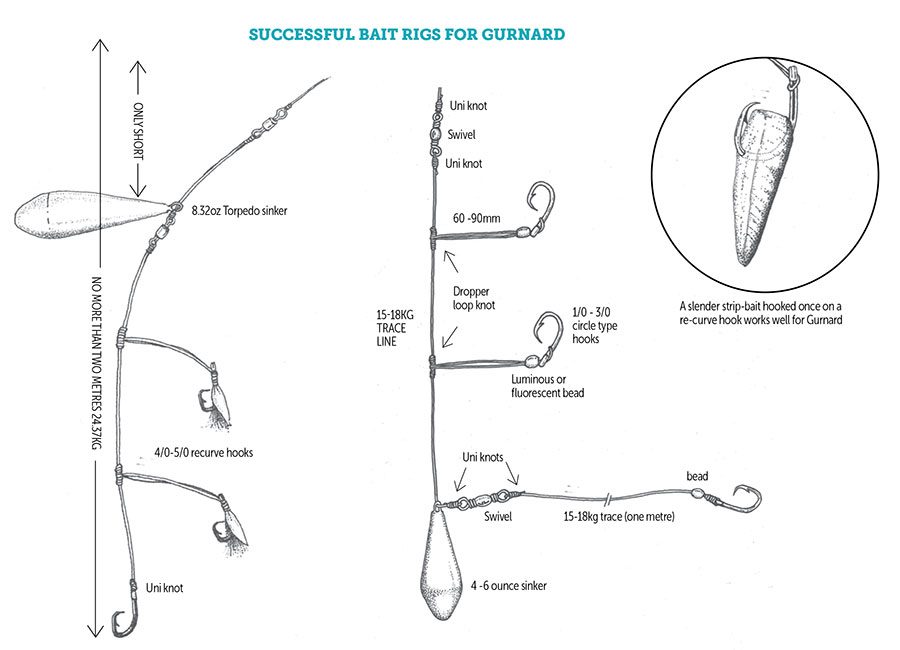
WHERE CAN GURNARD BE FOUND?
Gurnard prefer muddy, silty or sandy environments in water less than 50m deep. They do not like strong currents, but need some tidal flow to uncover potential prey items, such as shellfish, crabs and seaworms. Consequently, they hug the bottom out of the worst of the tidal flow and often frequent the sides and edges of channels and drop-offs where the current is slower.
FISHING WITH BAIT
The outfit: Gurnard do not grow very big, nor do they fight hard. Consequently 4-6kg tackle is ideal, providing lots of sporting fun and kai moana to take home – if you are fishing on the east coast.
Unfortunately, the west coast, which tends to be more productive for gurnard, especially during winter and early spring, also yields an abundance of sharks and rays (some very large!), so many anglers adopt no-nonsense 15-24kg outfits.
While I still risk 6kg at times, more usually I’ll compromise, opting for rods and reels loaded with 8-10kg line.
Speaking of which, braid tends to be better than nylon for gurnard fishing, because very thin braided lines cut through the water more effectively and provide easier bite detection.
Bait fishing rigs: Gurnard are the epitome of a bottom dweller, so the most effective rigs present baits close to, or on, the sea floor.
Ledger-type rigs are perfect for this purpose: in addition to providing that near-seafloor bait, the dropper waving in the current a bit higher up the line acts as a more obvious signpost, bringing gurnard in to investigate.
Unlike most other ledger rigs, keep the distance between the sinker and first dropper loop reasonably short, as gurnard generally prefer not to swim far off the bottom to feed. This rig also provides good contact with the baited hooks, so anglers can respond more quickly to bites.
However, there are good arguments for using a running rig too, albeit an unusual one (see diagram top right), as it can present two or three baited hooks lying on the seabed, all within easy reach of hunting gurnard. Multiple hooks also compensate for occasions when one hook is stripped bare – it’s good to have at least one more bait in reserve.
I like the theory behind both rigs, so the diagram above left shows how I’ve incorporated the two together – the resulting Frankenstein rig has proved lethal!
Whatever the rig choice, I recommend using circle/recurve hooks – 2/0-4/0 sizes work well – as they hook up even in strong currents, where detecting bites can be a problem, especially when using nylon monofilament main line.
It’s essential for your baits to remain on or close to the bottom, so ‘looking and acting as natural as possible’ goes out the window when gurnard fishing with bait. Instead, use a heavy weight that will hold the bottom – too heavy is definitely much better than slightly too light.
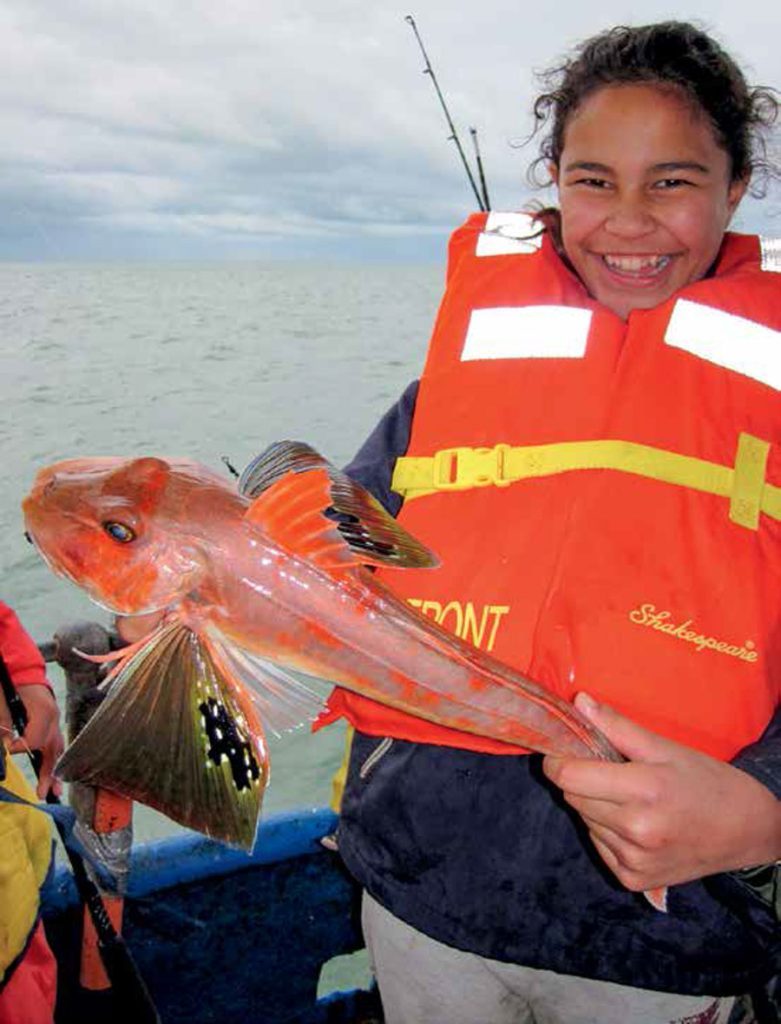
Recommended baits: Although gurnard have quite big mouths for their size, use small, slim baits – no bigger than your thumb is good. They especially like strips of skipjack tuna, although many west coast anglers swear by mullet. Pilchard chunks work, too, but are easily removed. Avoid squid, as gurnard seldom respond to this bait (weird!).
To berley – or not… While anchoring and berleying can be very effective, especially on the east coast, berley can be a liability out west, as it often attracts rays and sharks.
If you do use berley, use a heavily weighted berley dispersal system suspended just up from the seafloor, with the cord perhaps attached halfway along the vessel. Place your baited offerings just behind it in the berley trail.
TIP: Gurnard are often attracted by movement, so occasionally slowly lifting your rig a few centimetres off the bottom and dropping it back down again can pay dividends.
LURE OPTIONS
Gurnard can be suckers for small jigs and soft-plastic lures. Although lures can be deployed from an anchored boat, on the west coast the current often proves too powerful to fish them effectively, except around the change of tide or in very shallow water.
Standard jigs: It’s usually best to drift with the tide rather than anchor and to use fluttery-type lures around 10-30g in weight. A reasonably slow lift-and-drop (yo-yo) action works well. Wind up and start again when the line angle reaches around 40 degrees behind the boat. A vertical lift and drop is better than a more horizontal one.
Slow-jigs: These should also be fished on the drift and moved at a sedate pace, staying close to the bottom as gurnard rarely move very far off it. Slow-jigs can be much heavier than standard jigs, as the gurnard are tempted by the trailing tendrils rather than the bulbous jig-head.
It’s possible to catch gurnard by simply dragging a slow-jig along behind the boat, but make sure the rod is set in the holder at a suitable angle that the drag is backed well off to avoid rod breakages when a fish hooks up.
If the rod butt has exposed fibreglass/graphite that can come into contact with the lip of a metal rod holder, I always protect the butt section with something soft. While a gurnard probably won’t snap your rod, there are plenty of other species that could!
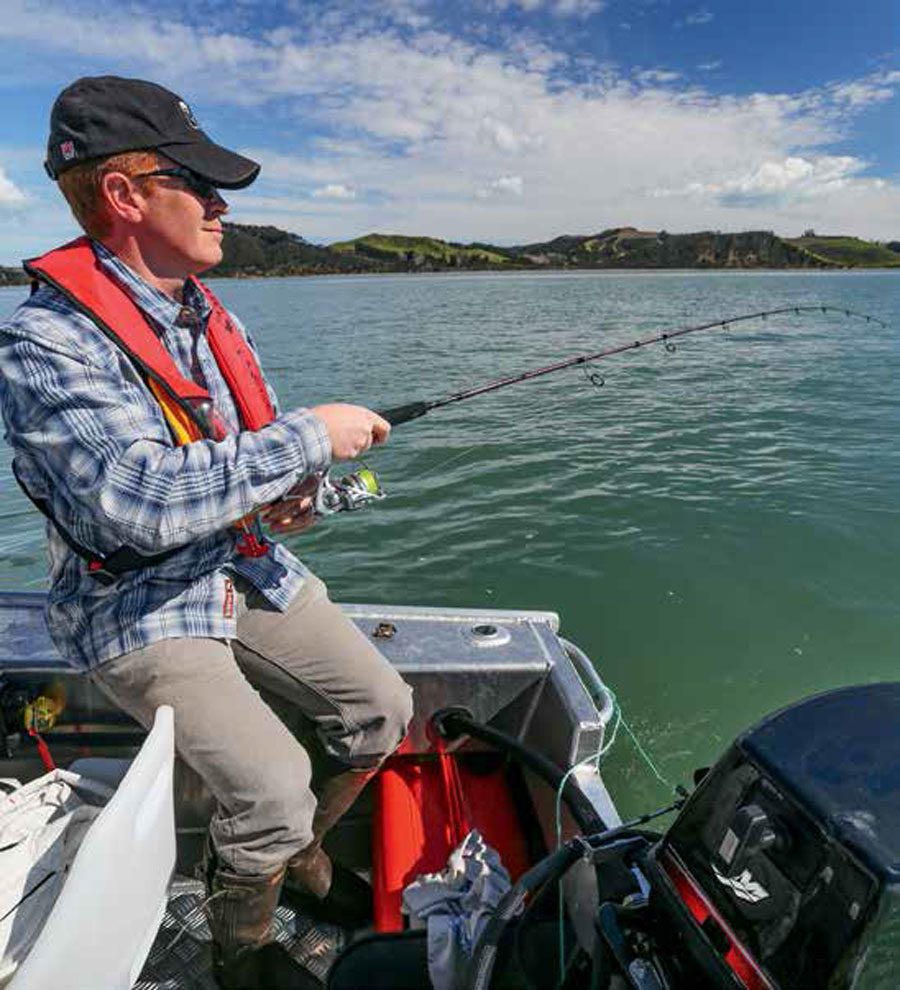
SOFT-BAITS
Small is the key here, with soft-baits around 2.5-4 inches long (6-10cm) being perfect. Ideally the lead-head should be armed with a 1/0-2/0 hook in keeping with the smallish soft-bait tail, but stronger currents may necessitate using a heavier jig-heads that look out of proportion. Fortunately, gurnard really can be surprisingly aggressive for their size, so oversize jig-heads may not be too much of a disadvantage!
Drop your offering down to the bottom, and slow lure movements down compared to when fishing for snapper, always keeping the lure reasonably close to the seabed.
Dragging the soft-bait behind a drifting boat can work well too, but you’ll get a lot of bites without hook-ups because gurnard are relatively small and lack the mass to reliably set the hook on their own.
If the water is quite dirty, it can pay to use a scented and flavoured product such as Gulp!. However, if small snapper prove a nuisance, tougher brands of soft plastics such as Z-Man can be made equally attractive by applying a greasy scent additive such as Z-Man ‘Secret Sauce’. Not only will gurnard bite these ‘tasty soft-baits’ harder, they also tend to hang on for longer, making it easier to achieve a successful hook-up.
EATING QUALITIES
Gurnard have firm but flaky flesh that suits most cooking methods. The flesh holds it shape well and has a delicate, delicious flavour.
Carrots anyone? BNZ




